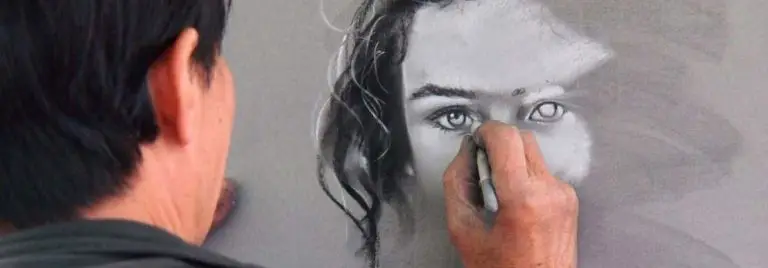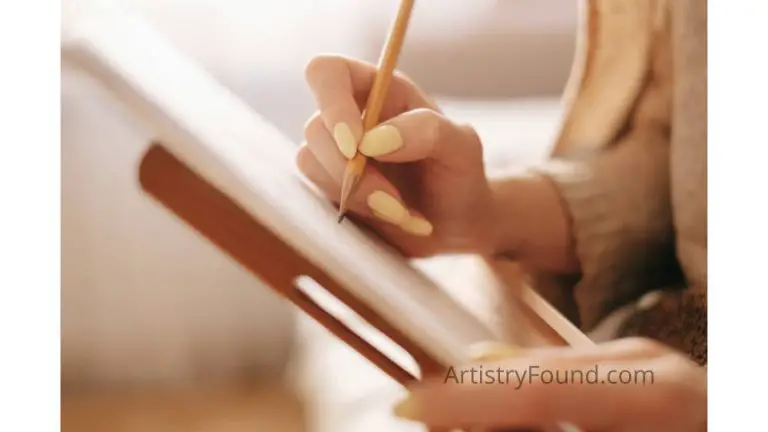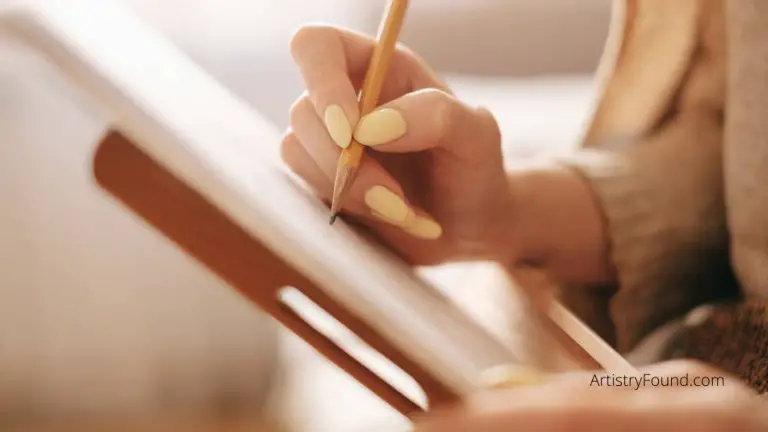Can You Draw with a Mechanical Pencil? (6 Benefits)
If you’ve made all of your drawings with the traditional wooden pencil, you may think it’s the best equipment for drawing. However, the increased popularity of mechanical pencils in art shops may have got you thinking: can you draw with these mechanical pencils?
You can draw with any mechanical pencil, just like you can with a wooden pencil. The finer lead and more durable design make them superior to anything available right now. While you can make masterpieces with any mechanical pencil, artist-specific ones always work best for drawing.
While mechanical pencils can be great drawing tools, they don’t replicate the exact experience you get with a traditional wooden pencil. In this article, you’ll learn why mechanical pencils are superior drawing equipment and how to use them for drawing.
What Is a Mechanical Pencil?
The looks of a mechanical pencil will fool you into thinking it’s a ballpoint pen. It has the ballpoint pen design but without the ballpoint. Instead, the writing tip is usually lead or graphite.
This pencil opens up like your regular pen, and it’s also refillable. However, mechanical pencils aren’t refilled with inks like regular pens but with lead or graphite made into a specific shape. This ensures that you don’t run out of juice while keeping the pencil’s length while you draw.
There are also mechanical pencils that are refillable with liquid lead. This mechanical pencil type is very similar to ink pens as the lead flows through the pencil’s tip to create writings on paper. However, the writing or drawings from these pencils are erasable when they dry, differentiating them from pens.
There are many reasons why you may want to buy a mechanical pencil, although it looks more expensive than regular wooden pencils. In the next section, you’ll learn some of the advantages of using a mechanical pencil and why you should get one for your next project.
Why Draw with a Mechanical Pencil?
If you’ve used the traditional wooden pencil your entire life, you’d think they’re perfect for drawing and you don’t need any mechanical stuff, at least until you try one out.
Once you start using a good mechanical pencil, you’ll never stop. Here are some of the reasons why a mechanical pencil is the best equipment for drawing.
1. They’re cheaper in the long run.
Wooden pencils cost a lot less than mechanical pencils, but they’re less economical in the long run. While this may sound confusing, it’s perfectly rational if you look at the bigger picture.
Wooden pencils are cheap, but they don’t last long. You can only sharpen one for so much time before its length makes it practically unusable.
On the other hand, mechanical pencils are a bit more expensive but can last forever with proper care and maintenance. As long as you can keep refilling the lead, you’ll have a pencil that works anytime without growing shorter with each passing day.
If you draw quite often, you’ll always exhaust wooden pencils pretty quickly, forcing you to replace them regularly. However, with mechanical pencils, you only have to replace the solid or liquid lead to keep you going.
As long as the lead is substantially cheaper than a wooden pencil, a mechanical pencil will always be the most economical option for most artists.
2. They’re more environmentally friendly.
Eco-friendliness is all the rage now, with manufacturers turning to recyclable raw materials for most of the products they manufacture. If you care about the environment, you may want to choose eco-friendly drawing equipment.
When comparing traditional wooden pencils and mechanical pencils in terms of environmental friendliness, the wooden pencil doesn’t even come close. Mechanical pencils have a more positive impact on the environment than wooden ones, for a couple of reasons.
Firstly, making a wooden pencil requires cutting down trees, which doesn’t have a positive impact on the environment. Also, the wood isn’t exactly recyclable, not after you’ve shredded it from constant sharpening.
Mechanical pencils, on the other hand, don’t require cutting down any trees. The frame is usually made from recyclable plastic or metal, and the tip is the same lead you can find on wooden pencils.
While these aren’t the eco-friendliest materials on earth, they’re far better than cutting down trees to make pencils. If you start buying more mechanical pencils and fewer wooden pencils, you may help save a tree, and consequently, the environment.
Most Popular Mechanical Art Pencils at Amazon
3. They draw consistent and controllable lines.
Since you have to sharpen wooden pencils manually, you need to worry about hitting the perfect tip size for your drawing. You also want to keep it consistent throughout the drawing to avoid inconsistent dull drawings.
With mechanical pencils, you don’t have to worry about that. The lead refills come in specific sizes that helps to achieve consistency while making the fine sketches.
Mechanical pencils are also excellent for adding fine details to a piece of art. The versatility of a mechanical pencil means you can use it for your whole drawing without having to sharpen it to a specific size.
4. They’re safer.
There’s always a chance of getting yourself injured whenever you’re working with a sharp object. If you use the traditional wooden pencils exclusively, you’ll have to use an Exacto knife to sharpen it, putting you at risk of cutting yourself.
The refillable nature of a mechanical pencil reduces the chances of getting cut by a knife to zero, as you don’t even have to sharpen them.
While you may think this shouldn’t keep you up at night, someone somewhere is trying to sharpen their pencil right now, and they’ll get cut by the knife. That wouldn’t be the case if everyone used mechanical pencils instead.
5. The lead is less prone to breakage.
Imagine sharpening your pencil and achieving the perfect tip for your drawing. You put your paper on the board and you prop up your easel stand. You attempt to start drawing, only to have the tip of the pencil fall off.
That happens more often than you think, and it’s nothing short of annoying. It is usually a result of the breakage of the lead inside the pencil due to falls. When this happens, it renders the pencil practically useless, and you usually have to get another.
With mechanical pencils, however, this is a non-issue. Mechanical pencil lead is more resilient than the lead in a regular pencil, and their build quality ensures that the lead is less likely to break in the event of a fall.
Even if the lead does break, you don’t need to replace the whole pencil, like you would in the case of a wooden pencil. You can simply replace the broken lead pieces to get back at doing what you love.
6. They last longer.
A mechanical pencil lasts longer than a wooden pencil, and it’s not even a competition. When you bring in the fact that mechanical pencils don’t grow shorter over time, you start to question why you’ve used wooden pencils in the first place.
Using a piece of equipment for an extended period isn’t only economically advantageous, you also become more proficient with the pencil over time.
If you can purchase a high-quality metal mechanical pencil with an adjustable medium (like this one on Amazon) that lets you use multiple lead sizes, you’ll only ever have to worry about buying lead refills henceforth, unless you lose the pencil somehow.
How to Choose a Mechanical Pencil
Nicpro Art Mechanical Pencil Set (Metal) from Amazon
If you’ve never used a mechanical pencil, you may have no idea how to choose one. There are so many mechanical pencils on the market that you may be overwhelmed by just looking at your options.
When choosing what pencil is best for your specific use case, there are some crucial choices to make. There is the size of the lead, the hardness of the lead, and the make of the pencil.
Making the correct choices in all of these three areas births the perfect mechanical pencil, tailored for your specific use case without any unnecessary bells and whistles.
To help you make the right decisions, here are some tips on choosing the best lead size, hardness, and material for your next mechanical pencil.
1. Lead Size
The lead for mechanical pencils has varying sizes. You can go as large as a .9 mm tip and as fine as a .2 mm tip. Even with experience, no artist can make .2 mm sized pencil sharpening consistently, which is a one-up for mechanical pencils.
A standard tip size lets you make all of your regular drawings and even your shadings with your mechanical pencil, while the superfine tip size lets you add those details that standard tip sizes ruin.
If you’re buying a cheap mechanical pen, you’ll have to worry about the lead size before making the purchase. However, some better (and consequently more expensive) options will let you dynamically modify the pencil to adjust the size of the lead that goes into them.
Cutting costs on equipment can mar your art. Buying a mechanical pen that lets you refill many different lead sizes is a no-brainer for every artist.
2. Lead Hardness
The lead size isn’t the only factor to consider when buying lead for your mechanical pencil. The hardness of the lead inside the pencil also matters to an artist.
Lead is a product of graphite and clay. The hardness of lead refers to how much clay content is present in the lead. A lead that’s almost entirely graphite can be referred to as soft lead, while a lead with higher clay content is hard to lead.
Contrary to what you may be thinking, soft lead makes a darker mark than hard lead. The clay only exists to dilute the graphite and reduce the blackness of the lead on paper.
Lead hardness can be measured in a range from 9H to 9B. H refers to the hardness of the lead, and 9H is the hardest kind of lead, which makes the faintest marks on paper. However, B means black, and 9B makes the darkest mark on paper, making it the softest lead you can find.
When making art, you’ll need both soft and hard lead quite frequently. Hard lead is great for drawing details and shading shadows, while hard lead is better for the major parts of the drawing.
If you’re looking for something in the middle of the spectrum, it’s HB, which stands for Hard Black.
When choosing lead for your mechanical pencil, ensure you stock up both hard, soft, and HB type lead for the most drawing versatility.
3. Pencil Build Material
You shouldn’t skimp on the build material of the mechanical pencil itself, as that’s what you’ll be holding and interacting with for most of the time.
Most of the mechanical pencils on the market are made entirely of plastic. These pencils may work perfectly for writing or other simple tasks, but you’ll need something far more comfortable to make good drawings.
High-quality mechanical pencils are almost always made of metal. While some are made entirely of metal, others have inner plastic parts with a metal casing.
Not only are metal pencils easier to hold, but they’re also more resilient and less prone to breakage in the event of an accidental fall.
Before making your final decision, you should test out many different pens to check out the one that’s most comfortable for you.
Top 5 Mechanical Pencils Talked About in the Video Above (Amazon)
- Uni Kuru Toga Advance
- Uni Kuru Toga Roulette
- Pentel GraphGear 1000
- Bic Xtra-Smooth
- Pentel Drafting Pencil Graph 1000
Can You Draw with a Mechanical Pencil?
There are many uses for a pencil, and drawing is just one of them. Some types of pencils perform woefully when tasked with creating art; is a mechanical pencil made for drawing?
Most mechanical pencils are great for drawing, but not all mechanical pencils are made equal. While some are made to be multipurpose, some are made specifically for artists, with some extra enhancements that wouldn’t make sense for individuals who just need a pencil to scribble letters.
The eraser at the end of most mechanical pencils does a pretty decent job of erasing your mistakes, while the refillable nature of the pencil means you don’t have to sharpen it constantly. That means you don’t have to carry an eraser or an Exacto knife whenever you’re drawing away from your desk.
A mechanical pencil won’t necessarily make you a better artist. Tools are only as good as those handling them, so it takes a lot of practice and experience, not a mechanical pencil, to perfect your skills as an artist.
With that being said, it’s also very advisable to use the best equipment when making art. You can surely drive nails into wood using a stone, but most carpenters use hammers anyway. You can surely make masterpieces with a wooden pencil, but you should be using a mechanical pencil anyway.
More From Artistry Found
- Can I Be an Artist If I Can’t Draw? (Art Without Drawing)
- Can You Actually Forget How To Draw? (Problem Solved!)
- Is Tracing Considered Art? (The TRUTH)
- 13 on Point Gifts for Artists Who Draw (Gift Guide)
- Drawing With a Mouse (Can It Be Done?)
References:










